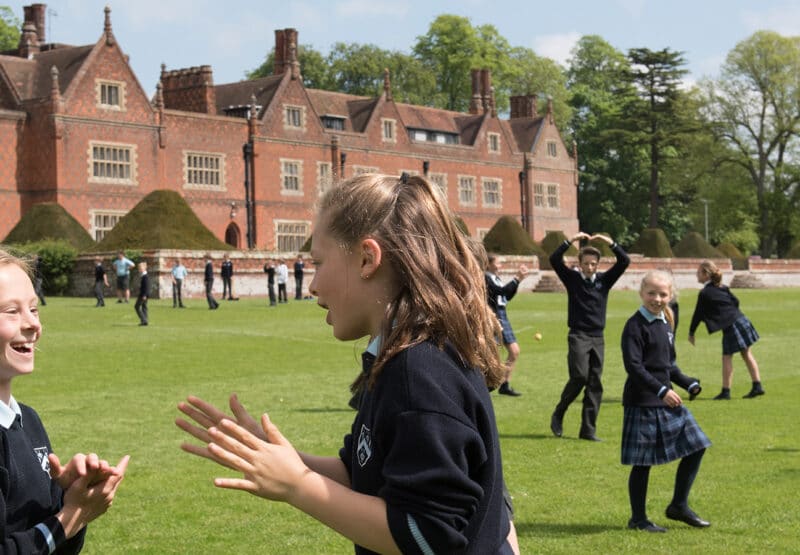Yesterday, 11th February, marked the sixth International Day of Women and Girls in Science; a day that recognises the vast and critical role that women play in science and technology.
Many scientific innovations and discoveries can be traced back to determined and pioneering women who, like Alice Ball and Rosalind Franklin, would have faced various indignities and injustices in what was then a very male-dominated world of science. Skip forward to today, however, and there is a growing movement to recognise these inspiring women for their outstanding achievements. The response to the COVID-19 pandemic has been notably women-led with scientists such as Professor Sarah Gilbert, Professor of Vaccinology at Oxford University and co-founder of Vaccitech, and Dr Ozlem Tureci, co-founder and Chief Medical Officer of BioNTech. These women, along with many others, have led ground-breaking research into vaccinations, treatments and technology and have been at the forefront of the fight against COVID-19.
All week, our Head of Biology, Clare Collins, has been promoting the nationwide initiative through a series of informative and inspiring emails to staff and pupils. This got us thinking – which female scientist has inspired you, and why? We asked our science teachers and our biology, chemistry and physics ambassadors to tell us which women in science they most admire
Dr Ruth Noble, Teacher of Biology and Chemistry, was keen to participate and quickly provided us with Elizabeth Garrett Anderson as her answer. As well as being “inextricably linked with Framlingham College,” Anderson made waves in London as one of the first female physicians in the 19th century. Her sheer dogged determination paved the way for other women aspiring to work in the medical profession. Once Anderson retired in 1902, she moved to the Suffolk coastal town of Aldeburgh and became the Mayor of the town in 1908. Not only was this a first for Aldeburgh to have a female Mayor; she was the first female mayor in England. Anderson was a member of the suffragette movement along with her daughter, Louisa.
Our Head of Biology, Clare Collins, found it difficult to narrow her answer down to just one woman who has inspired her but can remember the woman who first inspired her to pursue a career in science. From the age of 12, Mary Anning made several discoveries on the Dorset coast that would later lay the foundations of Charles Darwin’s theory of evolution and provide pivotal new explanations for natural history. Anning discovered the first known ichthyosaur fossil as well as the first two plesiosaur skeletons. However, due to her gender, she was never fully able to participate in the scientific world and was unable to join the Geological Society of London. Centuries on, in 2010, Anning was recognised as one of the top ten British women in the history of science.
After attending one of her lectures at the Cambridge Sixth Form Physics Department in 2019 with his A-Level pupils, Dino Constanti, our Head of Physics, draws inspiration from Dame Susan Jocelyn Bell Burnell. Burnell is an astrophysicist who, as a postgraduate student at Cambridge University, discovered the first radio pulsars in 1967. She is credited with one of the most significant scientific discoveries of the 20th century. Dino admired the way her lecture on Radio Astronomy was “accessible yet challenging and delivered with a great deal of wit.”
It is remarkable to see that generations on, young and aspiring scientists, like Carmen Karden, our year 12 biology ambassador, are still able to draw inspiration from female scientists that precede them from a time where recognition was meagre – to put it lightly. When asked, Carmen confidently spoke of her favourite scientist, Esther Lederberg. Lederberg was a microbiologist who worked alongside her husband. Together, they developed a method of being able to safely transfer bacterial colonies from one petri dish to another. Lederberg’s husband won a Nobel Prize – she didn’t. Lederberg’s attitude and dedication to her work, even in the face of adversity, is what Carmen admires so greatly about her.
Daisy Ward, our chemistry ambassador in year 13, gives thanks to Avril Mansfield for giving her the drive and determination to follow in her footsteps by applying to study medicine at university this year. In 1993, Mansfield was the first British woman to be appointed a professor of surgery in the UK, “defying the odds in a profession where women are outnumbered eight to one”, says Daisy.
Lastly, our physics ambassador in year 13, Veronika Lamparska, tells us of Austrian-Swedish physicist, Lise Meitner. Meitner was instrumental in the discovery of nuclear fission in 1917 which, today, is something that we all make use of by lighting our homes and charging our phones. Nuclear fission is the process by which a large atomic nucleus is split into smaller nuclei. This chain reaction develops a great deal of heat which, in a nuclear reactor, heats the water which drives the turbines which turns the generators, culminating in the generation of electricity and what became known as “clean energy” as the only by-product of nuclear fission is steam. Though Veronika was inspired by Meitner’s discovery, she is also heavily motivated by “her persistence and dedication to her work.”







